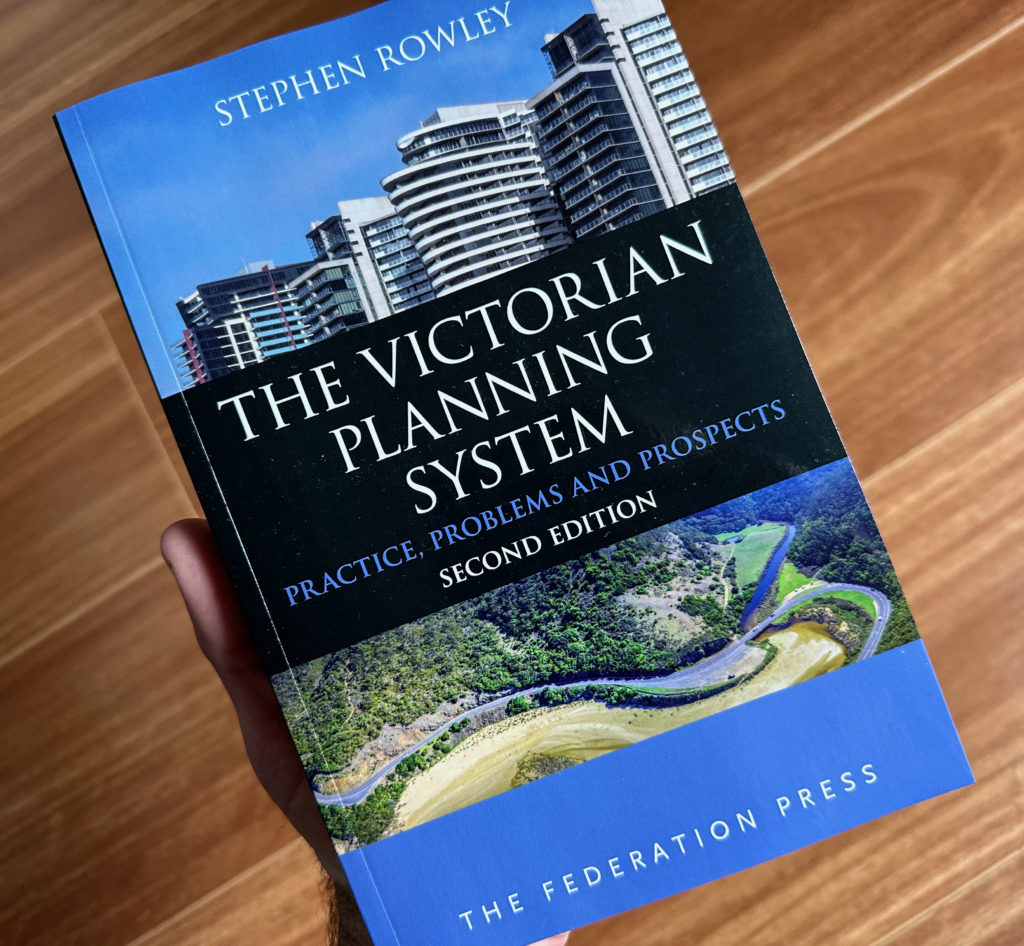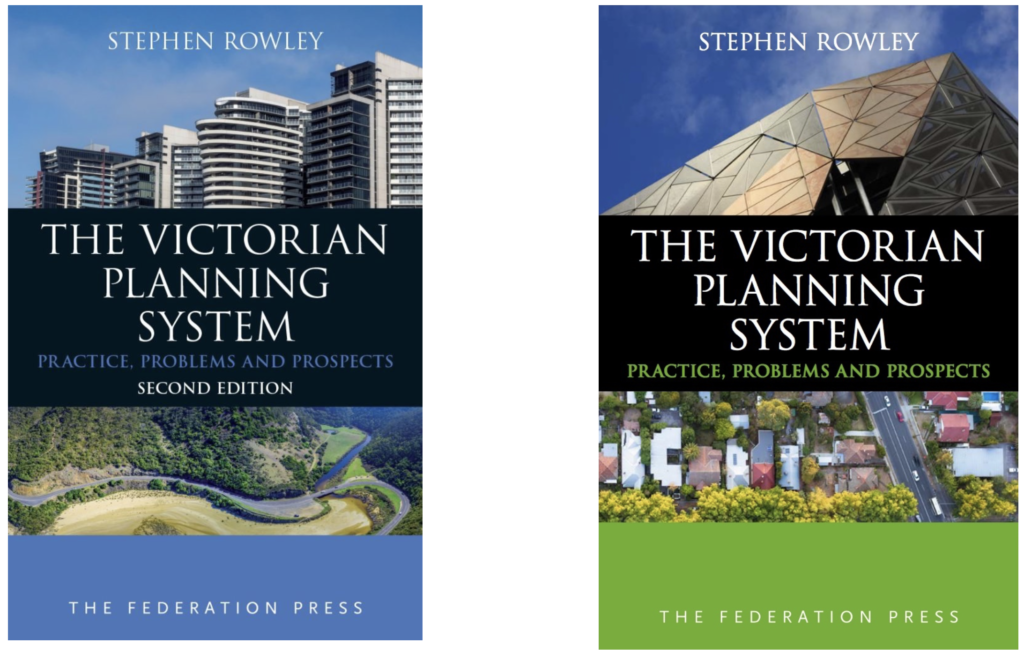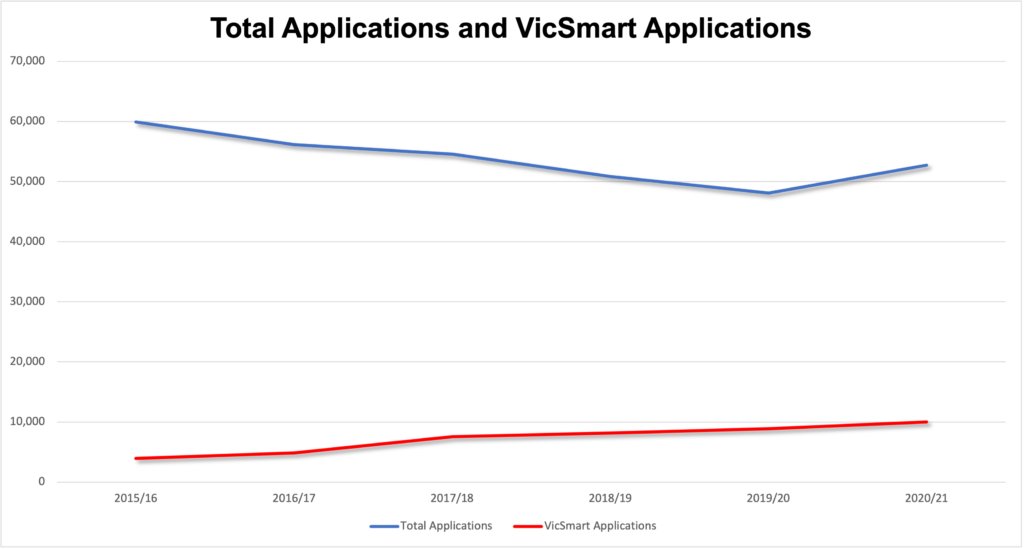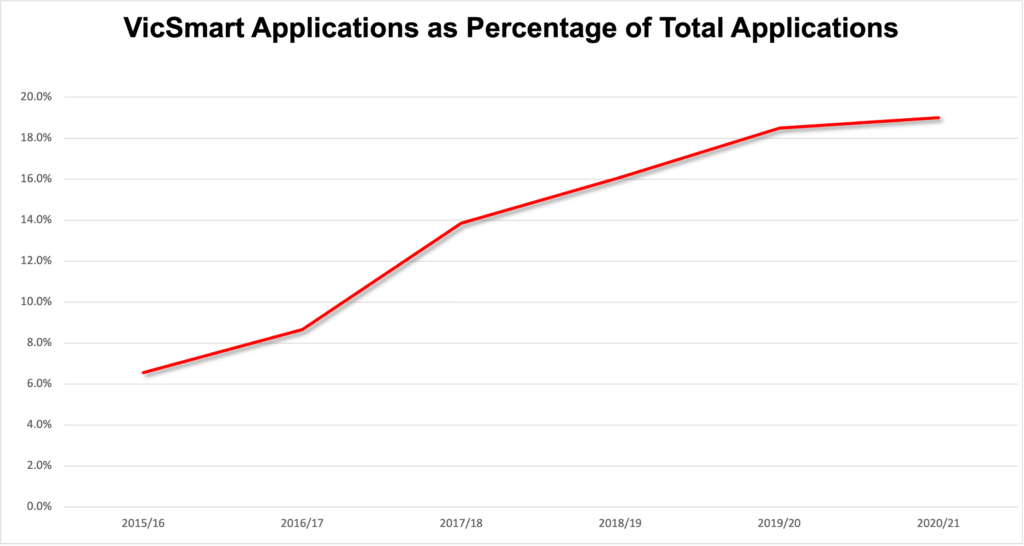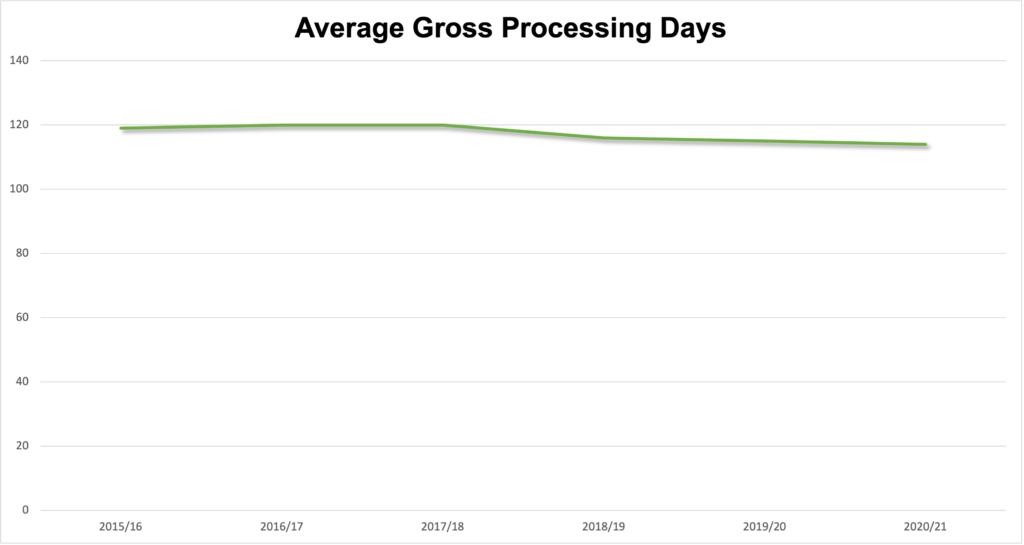
The other day I posted visualisations of what fully deemed to comply ResCode envelopes would look like, out of concern for the lack of any such imagery provided by government ahead of the new provisions becoming operational on 31 March. The day before yesterday (the Friday before the provisions come into effect) the government posted a new guidance document, the Town House and Low Rise Guidelines. This is essentially an update to the old Understanding the Residential Development Standards Practice Note, and provides assistance in understanding the provisions.
The new material does not include the diagrams of deemed to comply envelopes that I believe should be provided, but it did include another diagram I wanted to see – an illustration of the 10% tree canopy requirement. This is at page 35 of the document and reproduced above.
The tree canopy requirement has been highlighted as a new requirement in the code in the government’s announcements, and it is true that there was no numerical standard for tree canopy cover in the old provisions – this was instead part of a more qualitative assessment of landscaping. The centrality of the messaging about canopy makes sense, as a commitment to protecting and enhancing tree canopy is a key action in the new Plan for Victoria (see Action 12). This one element in that strategy that has carried through relatively strongly from Plan Melbourne 2017-2050, which had also included strong language about urban greening and cooling.
I agree this should be a priority – as climate change makes our cities hotter, adequate tree canopy is going to be ever more important. But do the provisions match the rhetoric?
The key question is whether the new approach to tree canopy is a step forward or back, and whether it will help achieve that Plan for Victoria‘s target of 30% tree canopy coverage. This is why I was so eager to see some visualisation or testing of the outcomes of the new tree canopy standard.
Continue reading





